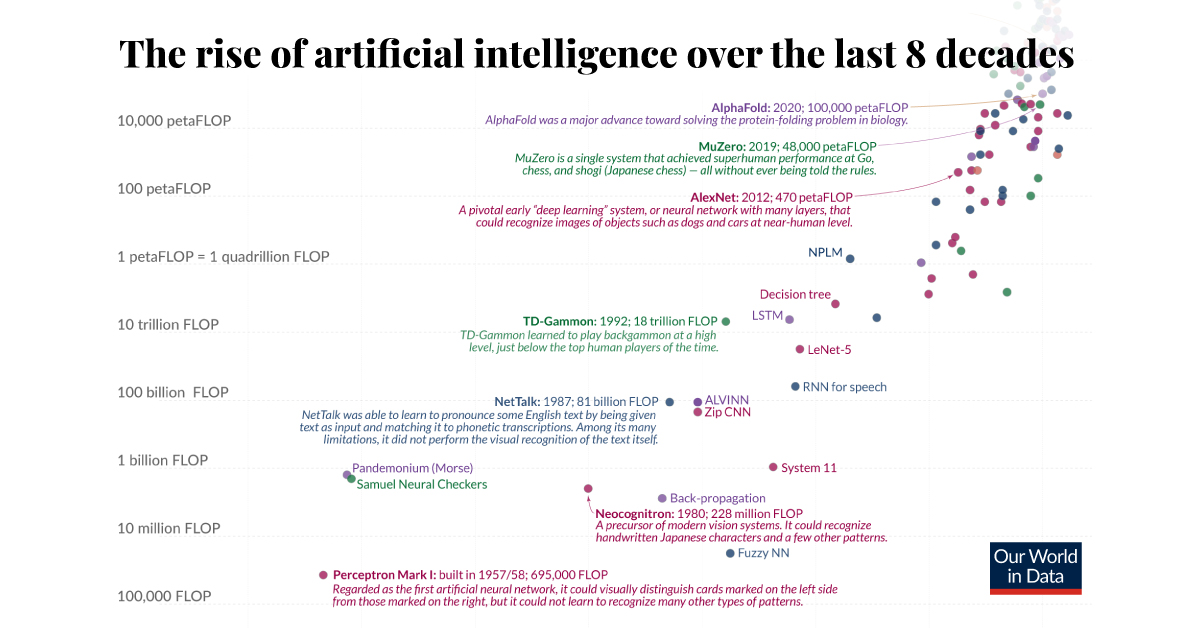The Exponential Growth in AI Computation
In eight decades, artificial intelligence has moved from purview of science fiction to reality. Here's a quick history of AI computation.
What has driven the growth of AI computation?
The growth in AI computation can be attributed to three main ingredients: increased computational power, the availability of vast training data, and advancements in algorithms. Initially, computation power grew according to Moore’s Law, but since the start of the Deep Learning Era in 2012, this growth has accelerated significantly, with the time required for computation to double reducing to just six months.
How has AI performance changed over time?
AI has progressed to a point where it not only matches but often exceeds human performance in various tasks. For instance, the compute used to train advanced models like Minerva is nearly 6 million times greater than that used for earlier models like AlexNet, showcasing the dramatic improvements in AI capabilities over the last decade.
What challenges does AI face in maintaining growth?
The future growth of AI computation may face challenges such as the increasing demand for computational power to train large-scale models and the risk of exhausting available data for training. If these issues are not addressed, they could slow down the progress of AI development, despite the significant funding and interest in the field.

The Exponential Growth in AI Computation
published by Divergent IT
Divergent IT is a tech service operational consulting & strategy firm. Divergent IT partners with CIOs, business owners, and Non-Profits to develop strategy and implementation across their business including: cybersecurity, remote maintenance management (RMM), IT strategy, on-site maintenance and more.



